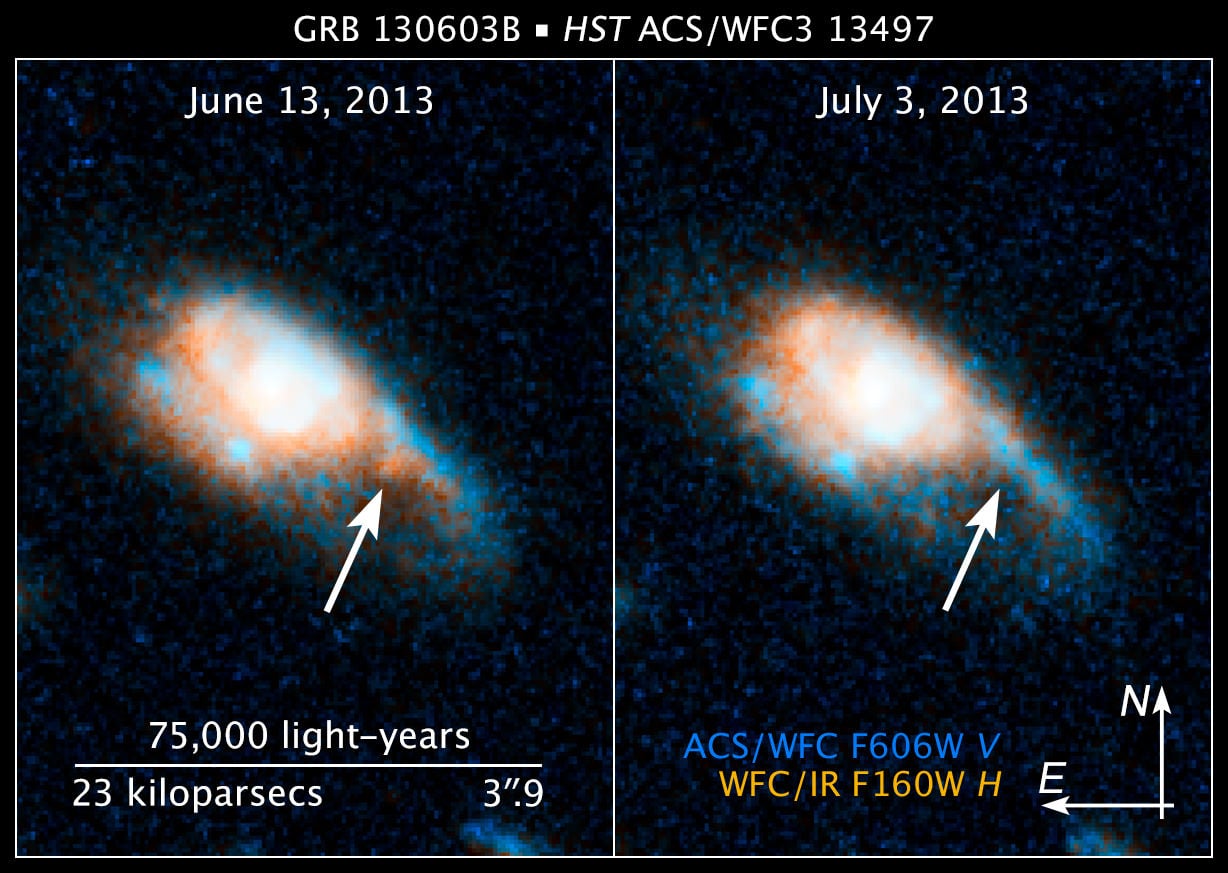As astute readers of
Universe Today
, you likely know what a
supernova
is: a stellar explosion that signals the end game for certain kinds of stars. Above, however, is a picture of a kilonova, which happens when two really dense objects come together.
This fireball arose after a short-term (1/10 of a second) gamma-ray burst came into view of the Swift space telescope on June 3. Nine days later, the Hubble Space Telescope looked at the same area to see if there were any remnants, and spotted a faint red object that was confirmed in independent observations.
It's the first time astronomers have been able to see a connection between gamma-ray bursts and kilonovas, although it was predicted before. They're saying this is the first evidence that short-duration gamma ray bursts arise as two super-dense stellar objects come together.
So what's the connection? Astronomers suspect it's this sequence of events:
- Two binary neutron stars (really dense stars) start to move closer to each other;
- The system sends out gravitational radiation that make ripples in space-time;
- These waves make the stars move even closer together;
- In the milliseconds before the explosion, the two stars "merge into a death spiral that kicks out highly radioactive material," as NASA states, with material that gets warmer, gets bigger and sends out light;
- The kilonova occurs with the detonation of a white dwarf. While it's bright, 1,000 times brighter than a nova, it's only 1/10th to 1/100th the brightness of an average supernova.
[caption id="attachment_89046" align="alignnone" width="576"]
An artistic image of the explosion of a star leading to a gamma-ray burst. (Source: FUW/Tentaris/Maciej Fro?ow)[/caption]
"This observation finally solves the mystery of the origin of short gamma ray bursts," stated Nial Tanvir of the University of Leicester in the United Kingdom, who is also the lead author.
"Many astronomers, including our group, have already provided a great deal of evidence that long-duration gamma ray bursts (those lasting more than two seconds) are produced by the collapse of extremely massive stars. But we only had weak circumstantial evidence that short bursts were produced by the merger of compact objects. This result now appears to provide definitive proof supporting that scenario."
Check out more details on the burst on
HubbleSite
. The scientific paper associated with these results was
published in Nature Aug. 3
.
Source:
NASA
 Universe Today
Universe Today
